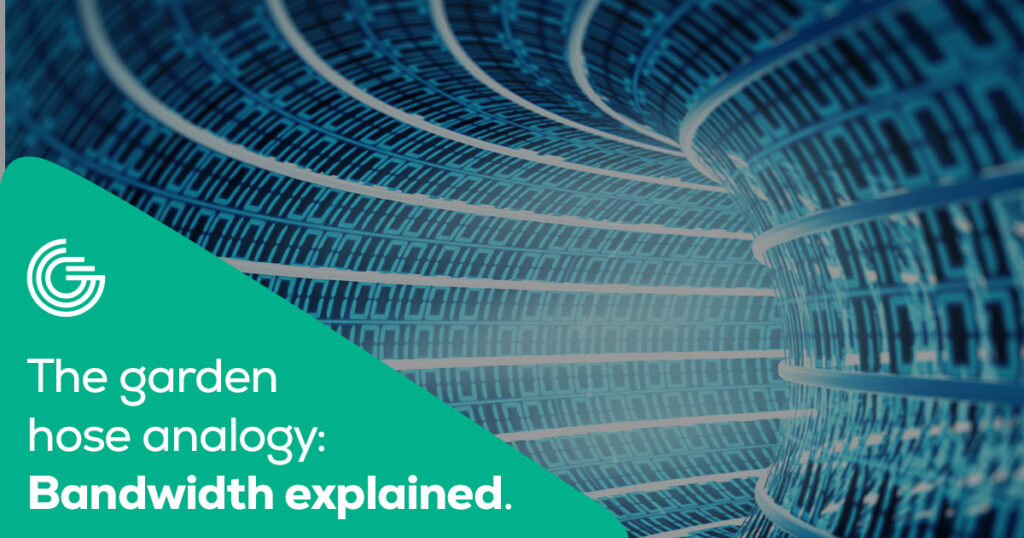
When it comes to Internet performance, there’s an awful lot of jargon thrown around — speed, ping, buffering, lag, download rates, megabits, gigabytes. If you aren’t in the know, it’s hard to follow. We can simplify it for you.
One thing everyone should have a good grasp on is bandwidth — it’s the single most important factor in Internet performance, and it’s different from speed. Luckily, there’s an easy analogy that explains what bandwidth is and why it matters.
Let’s go to the garden.
If the Water Coming Out of a Garden Hose Represents Internet Speed, the Diameter of the Hose Is Bandwidth
Imagine you’re in your backyard with a garden hose and you’ve got the spigot turned on. Water is flowing from the end of the hose at full speed.
In this scenario, the water is Internet data, the rate at which the water is flowing is speed, and the size diameter of the hose is bandwidth. You’ll fill a bucket of water faster if you have a wide garden hose attached to the spigot, not a skinny narrow tube like a straw.
As bandwidth and speed combine to ultimately determine the final rate at which data is transferred — usually expressed as megabits per second (Mbps) or gigabits per second (Gbps), people often use bandwidth and speed interchangeably, but that’s not correct. It’s bandwidth — the diameter of the hose — that really determines Internet performance as the speed of data transmission (the flow of water) never really changes. (Think back to the garden hose vs. a straw.)
No matter how fast the water is flowing out, it is the diameter of the hose that is going to be the single biggest factor in realizing any potential speed. A large enough diameter will let the water flow freely without restriction — as fast as it possibly can.
The More Things You Stream or Connect, the More Bandwidth You’ll Need
Now, imagine you are watering a single plant and that plant is your favorite show on Netflix. You’ve got a large diameter hose and the water is flowing fast — you are realizing the potential of both your bandwidth and your speed. In other words, you have plenty of water flowing fast enough to give Netflix as much water as it wants.
So far so good — but, what happens if you have a bunch of flowers (tablets, phones, more movies, video games, etc.) that want water at the same time, and you only have that one hose? You’ve got to split the stream.
By splitting the stream you’re essentially creating multiple hoses with reduced diameters. Internet data is the same way. The more devices you have connected and the more bandwidth they demand, the more your data stream is divided and reduced.
If you divide it enough times, you might get down to only a trickle or maybe nothing at all. Your flowers will wilt. Your Netflix will buffer and stutter. You don’t have to worry about that with GoNetspeed!
High-Speed Fiber Internet: The Firehose of Bandwidth
So, how do you make sure you don’t run out of water no matter how many flowers you’re trying to feed? You get a firehose — high flow, large diameter, lots of water. This way, no matter how many streams you split it into, it’s still going to be a lot of water per stream, more than enough for an entire garden of devices and applications.
That’s the difference between high-speed fiber Internet and other broadband, fiber is a firehose. And in a world where more and more houses are turning into huge gardens, you’re going to need a firehose, not a squirt gun.
At GoNetspeed — thanks to our fiber-only network — we only have firehouses to choose from. We have high-speed plans that offer an enormous amount of bandwidth, so no matter how many devices or programs you’re using simultaneously, you’re covered.
Check your address or get in touch with our super-friendly Customer Service team, 855-891-7291, to get started today.